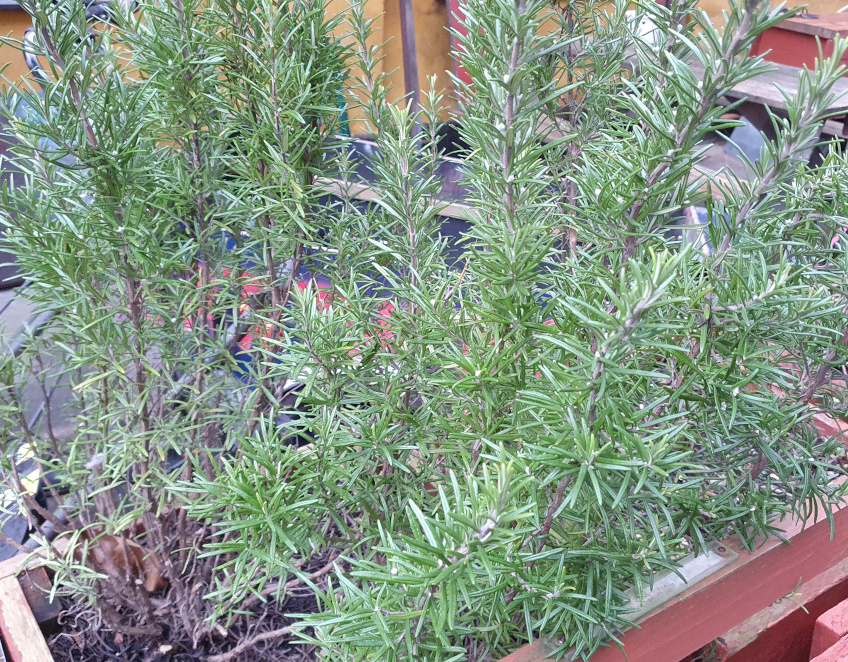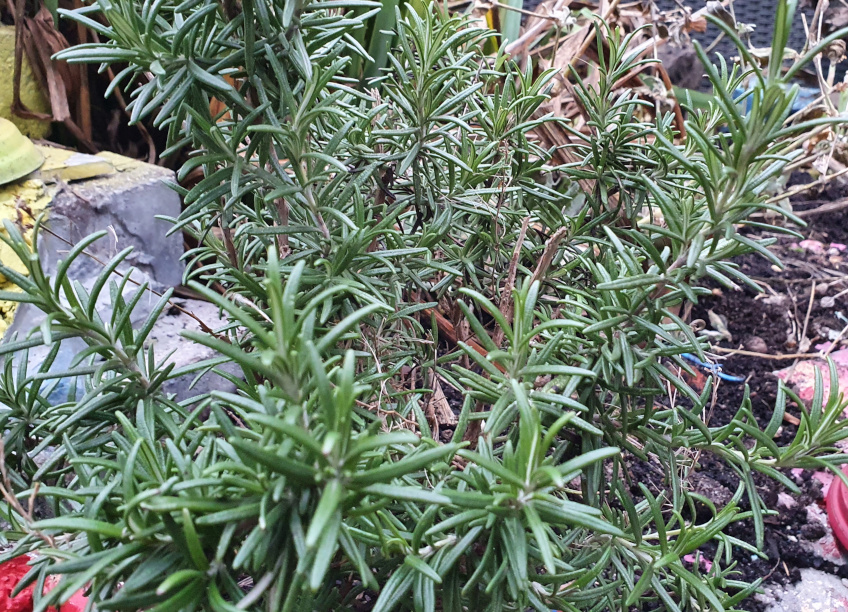Rosemary is an evergreen perennial herb, but there are a couple of things you might have to do at the end of the season in order for it to survive winters and grow for many years.
I have grown rosemary for a long time and I have also talked to some excellent professional gardeners about what to do with it at the end of the season to help it survive winters. I explain what you need to know in this article.

If you live in an area that never gets frost, not even during the winter, you don’t have to do anything with your rosemary at the end of the season other than what you do throughout the rest of the year anyway.
If you, like me, live in a place that gets frost in the winter, you most likely have to do something to help your rosemary survive. I will explain what to do now.
4 Things to Do With Your Rosemary at the End of the Season
I want to share 4 easy things you can do to help your rosemary plants survive cold winters. I have been growing rosemary for several years, so some of the tricks come from experience, but some of them come from talking to other passionate and experienced gardeners.
1. Water your rosemary less often than during the summer
One of the most common mistakes people make when they grow rosemary is that they overwater it. This is especially common in the winter since the plant doesn’t need nearly as much water as during the summer.
The more sunlight your rosemary plant gets, the more water it needs. This generally means that it doesn’t need a lot of water in the winter since there usually isn’t much sunlight.
To prevent damaging your rosemary from overwatering during the winter, water it much less than during the summer. In my experience, it is often not necessary to water rosemary at all in the winter, although you most likely have to do it if it doesn’t get any rain.
If you suspect that you might be overwatering your rosemary or you just want to make sure you aren’t, I recommend that you read the article on this link. In it, I explain how to make sure and how much you need to water it to prevent it from happening.
2. Cover your rosemary with pine branches or a plant cover
Rosemary can survive a bit of frost but if it gets too cold, it will begin to struggle (read more about that here). Because of that, you often have to protect it in the winter to prevent the cold temperatures from causing damage.
I talked to an expert gardener from a nearby garden center about this and he recommended covering rosemary plants with a thick layer of pine branches in the winter to protect them from the cold. You can also buy a plant cover from most garden centers or online, which will work fine. Just make sure the roots especially are protected.
If you grow your rosemary in pots, it is usually easier to just move it to a warmer spot, which is my next tip.
3. Move your rosemary to a warmer spot
The easiest thing you can do to help your potted rosemary through the winter is to move it to a warm spot.
I usually recommend bringing it inside and placing it next to a sunny window until the spring when there is no risk of frost.
If you only get mild winters, it can sometimes be sufficient to just move your rosemary closer to your house since some heat usually escapes, which can help the plant stay warm enough. To be safe, I would still cover it with some pine branches or a plant cover as I explained above.
If you have the space, I recommend bringing the plant inside just to be safe.
4. Don’t harvest in large quantities during the winter
Most plants, including rosemary, are at higher risk of taking damage when freshly cut stems are exposed to frost. To reduce the risk of damaging your rosemary, avoid harvesting too much during the winter.
If your rosemary needs heavy pruning, either to reduce its size or change its shape, I recommend waiting until the spring or summer when there is no risk of frost.
That said, you can usually still harvest from your rosemary in the winter, but keep reading as there are some things you should know before doing so.
Can You Harvest Rosemary in the Winter Without Damaging It?

You can still harvest from your rosemary during the winter, but you should be a bit more careful than throughout the rest of the year since the cold temperatures can damage the plant if you cut too much at the same time.
To be safe, only harvest what you need when you need it and make sure you harvest evenly from around the plant to allow it to grow back.
I have written another article where I explain the best method for harvesting rosemary so that it will become bushier and more productive. You can find the article on this link.
Rosemary doesn’t grow nearly as much in the winter as in the summer, so be careful that you don’t harvest too much because it can take a while for it to grow back.
You should also keep in mind that the larger your rosemary plant is, the more you can harvest from it. Small rosemary plants can be fragile but large ones tend to be robust.
I don’t hesitate to harvest some fresh rosemary from my plants when I need it throughout the winter and I have never had problems doing so, but I have also always been careful not to cut too much at the same time.
When Does the Rosemary Growing Season Start and End?
Rosemary is an evergreen perennial herb, which means that it grows for many years and has green foliage all year round.
This also means that you can harvest it all year round, although you should be gentle, as I explained above.
While rosemary has green foliage and sometimes even grows a bit during the winter, it will grow significantly faster during the summer when it has high temperatures and gets a lot of direct sunlight.
This means that the actual growing season for rosemary depends on where you live, but will typically start in the spring when there is no more frost and last until late fall or early winter.
If you are curious about the best time to start growing rosemary, I recommend that you read the article on this link. Rosemary seeds take a long time to germinate and the plant grows slowly in the beginning, so you need to start earlier than you might think. I cover this as well as precisely how to sow your rosemary seeds in the article.
